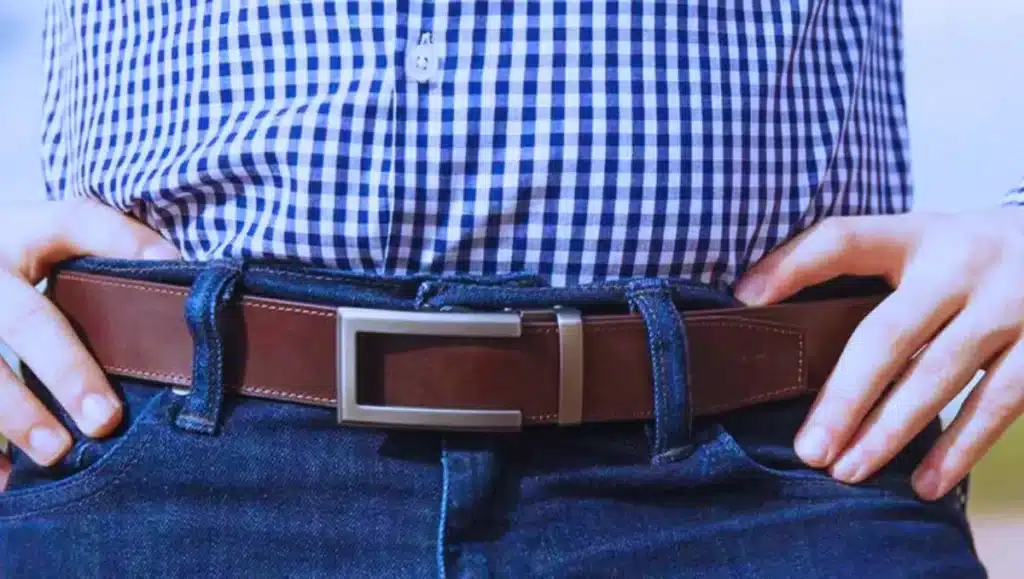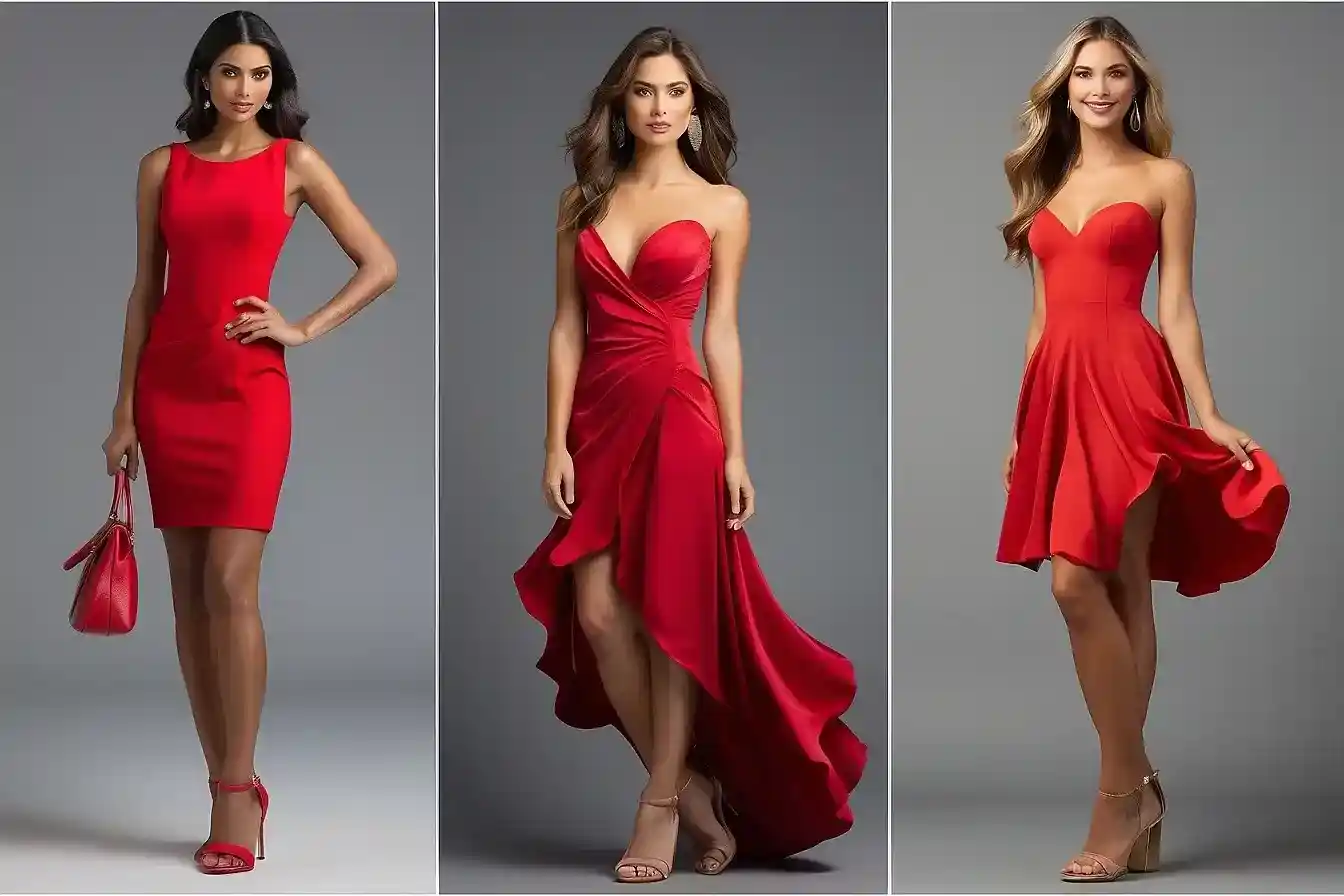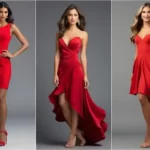Table of Contents
ToggleI. Introduction
Wearing a belt buckle may seem like a straightforward task, but doing it with finesse can elevate your style and add a touch of sophistication to your outfit. Whether you’re dressing up for a formal occasion or simply looking to keep your pants in place, knowing how to wear a belt buckle correctly is essential.
This step-by-step guide for the process of How To Wear Belt Buckle and provides a clear understanding of the proper way to wear a belt buckle. From selecting the right belt to positioning the buckle flawlessly, we’ll walk you through each stage, making the entire process easy to follow.

While it might appear as a minor detail, how you wear your belt buckle can significantly affect your overall appearance. A well-chosen and well-worn belt buckle can serve as a statement piece, showcasing your personal style and attention to detail.
By following the seven steps outlined in this guide, you’ll achieve a secure fit and exude confidence and elegance. Whether you’re dressing up for a professional setting, a casual outing, or a special event, mastering the art of wearing a belt buckle will undoubtedly enhance your overall look.
So, let’s delve into the world of belt buckles and embark on a journey to perfecting this small yet impactful element of your wardrobe. Get ready to elevate your style and make a lasting impression with a well-worn belt buckle that speaks volumes about your fashion sensibility.
How To Wear Belt Buckle
II. Step 1: Selecting the Right Belt Buckle
Before delving into the process of wearing a belt buckle, it’s crucial to start with the foundation: choosing the right belt. The right belt will not only ensure a seamless fit with your buckle but also complement your outfit and personal style.
- You can purchase a variety of belt buckles by below links
- Men’s belt buckle
- women belt buckle
- style and dressing
A. Consider Belt Material:
Belts come in various materials such as leather, fabric, suede, and synthetic options. Leather belts are classic, versatile, and suitable for most occasions. On the other hand, fabric and suede belts add a more casual or bohemian touch. Select a material that aligns with the formality and aesthetics of your outfit.
B. Evaluate Belt Width:
Pay attention to the width of the belt, as it should match the width of the belt buckle’s loop. Standard belt widths are usually around 1.5 inches (3.8 cm) for men’s belts and slightly narrower for women’s belts. If your buckle is particularly wide or narrow, ensure your belt’s width is proportionate.
C. Check Belt Length:
The length of the belt is crucial for achieving a proper fit. To determine the correct size, try on the belt and fasten it at the most comfortable hole. There should be a few inches of excess length after fastening to allow for threading through the buckle.
D. Coordinate Belt Color:
For versatility, opt for a belt color that complements various outfits. Classic black and brown belts are timeless choices that pair well with a wide range of clothing styles. Additionally, consider the buckle’s color to ensure a harmonious match.
E. Test Belt Quality:
Invest in a well-constructed belt made from high-quality materials. Check the stitching, buckle attachment, and overall durability to ensure it can withstand regular use.
F. Determine the Buckle Type:
If you already have a buckle in mind, ensure the belt you choose is compatible with it. Some belt buckles require specific belt types, such as those with snaps, clips, or removable straps.
Remember, a belt is not just a functional accessory; it also contributes to the overall aesthetic of your outfit. Take your time to find the perfect belt that suits your style and ensures a smooth pairing with your chosen belt buckle. With the right foundation, you’ll be well-prepared to proceed to the next steps of wearing your belt buckle like a style connoisseur.

III. Step 2: Threading the Belt Through Belt Loops
Now that you have selected the right belt for your buckle, it’s time to thread it through the belt loops of your pants or skirt. Proper threading ensures that your belt sits securely and comfortably on your waist, providing both style and functionality.
Below are steps to thread your belt through the belt loops:
- 1. Prepare the Belt: Hold the belt with the buckle in your dominant hand, and the free end in your other hand. Ensure that the buckle is facing the right way, ready to be fastened at the end.
- 2. Locate the First Belt Loop: Begin by finding the first belt loop on the left side of your pants (or right side, depending on your preference). This loop will be closest to the buckle when worn.
- 3. Insert the Belt: With the first belt loop in sight, insert the free end of the belt from the outside of the loop. Thread it towards the inside of the loop and then out again. The belt should now be on the inside of the loop, and the free end will be on the outside.
- 4. Keep the Free End Loose: As you thread the belt through the first loop, keep the free end loose. This will allow you to adjust the tightness of the belt later.
- 5. Continue Threading: Move along the waistband and locate the second belt loop. Repeat the threading process by inserting the free end from the outside, then towards the inside, and out again.
- 6. Repeat Until Last Loop: Continue threading the belt through each belt loop until you reach the last one. Be mindful to keep the belt flat and untwisted as you go along.
- 7. Leave Excess Length: Once you’ve threaded the belt through the last loop, leave a few inches of the free end hanging. This excess length will be used to fasten the belt buckle.
IV. Step 3: Positioning the Buckle
Positioning the buckle correctly is essential for achieving a polished and flattering look. The placement of the buckle on your waist can affect the overall balance of your outfit and accentuate your natural curves.
- 1. Natural Waistline: The most common and flattering position for a belt buckle is around your natural waistline. Your natural waistline is the narrowest part of your torso, typically located above your belly button and below your ribcage. Placing the buckle here helps define your waist and creates an hourglass silhouette.
- 2. Hip Placement: If you prefer a more casual or laid-back look, you can wear the belt buckle on your hips. The hip placement is lower than the natural waistline and sits on the bony prominence of your hip bones. This position can work well with certain outfits, such as low-rise jeans or skirts.
- 3. Experiment and Adjust: Try on the belt and position the buckle at both your natural waistline and hips. Take a moment to assess how each placement looks and feels. Choose the option that complements your outfit and flatters your body shape.
- 4. Consider Outfit and Occasion: The choice of buckle position can also depend on the outfit and the occasion. For formal or dressy events, the natural waistline is generally more elegant. On the other hand, a hip placement might be suitable for casual, bohemian, or street-style ensembles.
- 5. Secure Fit: Once you’ve determined the desired buckle position, ensure that the belt is snug but comfortable. It should hold your pants or skirt in place without feeling too tight or causing discomfort.
- 6. Adjustability: Some belts come with multiple belt holes, providing adjustability for various waist sizes. Choose the hole that allows for a secure fit without excessive overlap of the belt end.
- 7. Buckle Centering: Ensure that the buckle is centered and aligned correctly with your outfit. A well-centered buckle adds a touch of symmetry and balance to your overall appearance.

VI. Step 5: Tightening the Belt
After positioning the buckle at the desired spot on your waist, the next step is to tighten the belt to achieve a comfortable and secure fit. Proper tightening ensures that your pants or skirt stay in place throughout the day while maintaining a polished appearance.
- 1. Hold the Buckle: With the belt buckle in one hand, hold the free end of the belt with your other hand. This will allow you to control the tightening process smoothly.
- 2. Pull the Free End: Gently pull the free end of the belt away from the buckle, tightening it around your waist. Be mindful not to pull too tightly at once; instead, make gradual adjustments to find the right fit.
- 3. Check Comfort: As you tighten the belt, check for comfort. The belt should feel snug but not constricting or uncomfortable. You should be able to breathe comfortably while wearing it.
- 4. Test Fit: After the initial tightening, move around a bit to ensure the belt stays in place. Adjust the tightness further if needed until you’re satisfied with the fit.
- 5. Avoid Over-Tightening: Be cautious not to over-tighten the belt, as it can cause discomfort and may create unsightly bulges or wrinkles in your clothing. Finding the right balance is essential for both comfort and style.
- 6. Maintain Even Tightness: Ensure that the belt is evenly tightened along its entire length. Uneven tightness can lead to an unflattering look and may cause the belt to shift during wear.
- 7. Final Adjustment: Once you’re confident with the fit, fasten the belt buckle in the appropriate belt hole to secure it. The belt should remain comfortably snug without slipping or sliding.
- 8. Double-check the Buckle: As a final step, double-check that the buckle is centered and aligned correctly. A well-aligned buckle adds a polished touch to your outfit.
VII. Step 6: Securing the Belt
Securing the belt is a crucial step to ensure it stays in place and maintains a polished look throughout the day. By fastening the free end of the belt to the first belt loop, you prevent the belt from slipping or moving during wear.
- 1. Locate the First Belt Loop: After tightening the belt to your desired level of comfort, find the first belt loop on the side where the free end of the belt is hanging. The first loop is typically the one closest to the belt buckle when worn.
- 2. Thread the Free End Through the Loop: Take the free end of the belt and thread it through the first belt loop from the outside to the inside. This means inserting the free end through the loop in a direction that will bring it closer to your body.
- 3. Double-Back the Belt End: After passing the free end through the first loop, double it back towards the outside. This creates a loop around the belt loop, effectively securing the belt in place.
- 4. Guide the Belt End Through the Loop: Gently guide the free end of the belt through the loop created in the previous step. This ensures that the belt is securely fastened to the belt loop.
- 5. Check for Snugness: Confirm that the belt is now snugly secured to the first loop. The loop should hold the belt in place, preventing any unwanted movement or slippage.
- 6. Avoid Excessive Tightening: While securing the belt, be cautious not to pull too tightly, as it may cause discomfort and affect the belt’s fit. The goal is to fasten it securely without over-tightening.
- 7. Confirm Alignment: Double-check that the belt buckle is centered and aligned correctly. Ensure that the belt’s alignment remains even and symmetrical.
- 8. Optional: Trim Excess Length (if applicable): If there is a significant excess length of the free end after securing the belt, you may trim it slightly to avoid excessive hanging or bulkiness. However, leave enough length for adjustments if needed.
By securing the belt properly, you complete the process of wearing your belt buckle with finesse and functionality. A securely fastened belt ensures that your outfit stays neat and put together, allowing you to move confidently and comfortably.
VIII. Step 7: Adjusting the Buckle
Once your belt is securely fastened, it’s time to focus on the final touches and ensure that the belt buckle looks perfect with your outfit. Adjusting the buckle properly is essential to maintain a polished and balanced appearance.
- 1. Center the Buckle: Confirm that the belt buckle is centered on your waist. It should be aligned with your natural waistline or the desired position you chose during Step 3.
- 2. Ensure Proper Alignment: Double-check that the buckle is sitting straight and not tilted to one side. A well-aligned buckle adds a sense of symmetry and elegance to your outfit.
- 3. Check Buckle Orientation: Some belt buckles have a specific orientation, such as a logo or design that faces a particular direction. Make sure the buckle is facing the way you intended, especially for buckles with reversible designs.
- 4. Smooth out the Belt: Adjust the belt to ensure it lies flat and is not twisted or bunched up. A smooth and straight belt enhances the overall appearance.
- 5. Optional: Tuck in Excess Belt (if applicable): If there is a long tail of excess belt after securing the buckle, you can tuck it into the belt loops on the opposite side of the buckle. This keeps the belt neatly in place and avoids a distracting overhang.
- 6. Final Check in the Mirror: Take a moment to stand in front of a mirror and assess your overall appearance. Check for any adjustments needed and make sure the belt buckle complements your outfit perfectly.
- 7. Confidence and Poise: Embrace your style with confidence and poise. Wearing a well-adjusted belt buckle not only completes your look but also enhances your self-assurance.
IX. Conclusion
Congratulations! You’ve now mastered the art of wearing a belt buckle with finesse and style. By following this step-by-step guide, you’ve learned the essential techniques to ensure that your belt not only keeps your pants or skirt in place but also complements your outfit flawlessly.
Remember, the process begins with selecting the right belt that matches your buckle and suits your style. Threading the belt through the belt loops with precision ensures a secure foundation. Positioning the buckle correctly enhances your figure and adds an elegant touch to your appearance. Tightening the belt to the perfect fit guarantees both comfort and functionality.
Securing the belt with care prevents any unwanted movement and maintains a polished look throughout the day. Adjusting the buckle adds the final touch, ensuring that it sits centered and aligned impeccably.
Now that you’ve mastered these steps, you can confidently wear your belt buckle for any occasion, be it a formal event, a casual outing, or even daily work attire. A well-worn belt buckle not only keeps your outfit in place but also speaks volumes about your attention to detail and personal style.
With this newfound knowledge, you can showcase your fashion sensibility and create a lasting impression with every outfit. Remember to choose a belt that complements your buckle, position it to suit your body shape, and adjust it with care for a comfortable and stylish fit.






